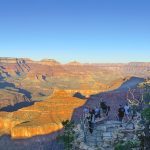
50 Years Ago | Navajos win federal court case over redistricting
Navajo Tribal Chairman Peter MacDonald got nowhere with his efforts to get the Arizona Legislature to redo county maps and take out the Native American portions in Apache, Navajo and Coconino counties and create an all-Native county.
But he had a lot better outcome when the tribe filed an objection to the state’s reapportionment of legislative districts. The state divided the Navajo and Hopi voters into three separate legislative districts, all of which were dominated by non-Native voters.
The tribe went to federal court to get this changed claiming that Navajo voters were being discriminated against.
And the federal district court agreed, saying this was a blatant attempt to silence Navajo voters to make sure that non-Natives were elected to represent the northeastern section of the state.
The tribe’s protest took a lot of state officials by surprise since the Navajos had never complained in the past about state officials drawing up maps that would make it impossible for a Navajo to be elected to the state Legislature. After all, they probably thought, what interest would a Navajo have in discussing state issues.
Well, times have changed and from his first day in office, MacDonald worked to get the tribe involved in county and state politics to elect one person to the state Senate and two to the House of Representatives.
“This is a great day for the Navajos as well as for Arizona American people,” said MacDonald. “For the decision not only provides justice for the Navajo people but it also reaffirms a sense of justice for all Americans.”
Of course, the decision was not liked by the Hopi Tribe who would in the future be represented by Navajos in the state Legislature.
“We would rather keep the present system,” said Hopi Tribal Chairman Clarence Hamilton.
Sen. Glenn Flake, D-Snowflake, said, “I now have a better feeling about how Custer must have felt. The courts may have helped the Navajos but it massacred a lot of incumbents.”
Navajo medical school
The Navajo Tribal Council approved the creation of a Department of Health and, of course, their first move was to seek support from the federal government for the development of a Navajo medical school on the reservation.
At this time, only three Navajos had been admitted to medical school but the Council said having a medical, school on the reservation would encourage more Navajos to seek a medical career since studies by the U.S. Department of Health showed that doctors who spoke and understood Navajo would be better able to understand the problems of Navajos who seek treatment.
But the school would not only be for Navajos but other Native Americans would be encouraged to attend as well with the idea that once they received medical training they could go back and serve their own tribe.
The studies indicated that, with a good recruitment program, the school would grow to more than 200 students by 1985.
Another unique part of the school would be a section to train Navajos to become medicine men.
The school would hire some of the most recognized medicine men, pay them a good salary and set up an apprenticeship program that would provide at least three years of training.
There had been reports that that the average age of Navajo medicine men was over 60 and very few young Navajos were going through the rigorous training needed to become a medicine man.
Having doctors and medicine men trained in one school would also create the opportunity for the two to get a better understanding of what each can do and develop more cooperation between the two fields in the future.
The idea was discussed by federal health officials and there was some support but, in the end, it went nowhere as other tribes indicated they wanted their students to go to regular medicine schools where they could receive better training.
Gripes about telephone service
I wrote a couple of weeks ago about the thousands of Navajos who were upset about having to pay an average of $40 to $45 a month for basic telephone service. It turns out that this was not the only gripe people on the reservation had about telephones.
Having your phone number listed in the reservation phone directory could be a pain because it paved the way for you to get calls from people trying to get in touch with a relative or friend who didn’t have a phone.
In the 1970s, many of the communities that had phone service only had a hundred or so people listed in the directory so it was not unusual for them to get calls from people trying to get a message to someone else living in that community.
And if your name was Begay, Benally or Yazzie you were practically guaranteed to receive these kinds of calls on a regular basis.
It wasn’t uncommon for people to get so frustrated with the unwelcome calls that they would have their phone numbers unlisted, which would just increase the number of these calls to those still in the directory.
For me and other reporters for the Navajo Times, the directory was a godsend because if we had to find out about something going on in the community and the chapter officials refused to talk, all we had to do was try a few phone numbers and we would get the information we needed.

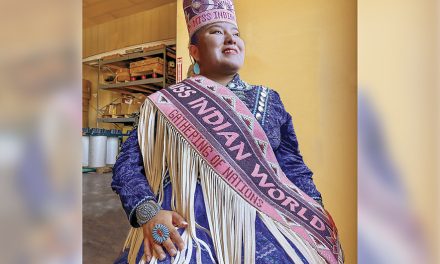
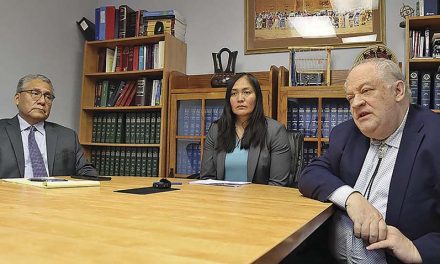
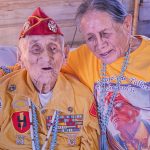
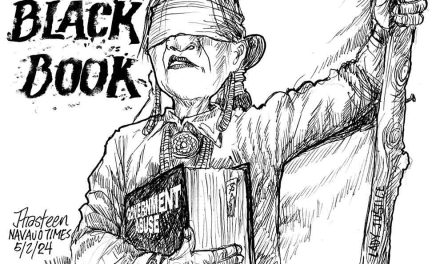



 Highway 264,
Highway 264, I-40, WB @ Winslow
I-40, WB @ Winslow